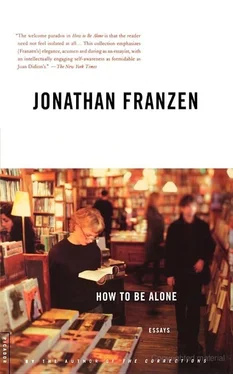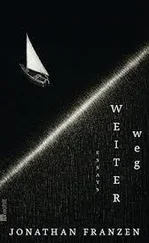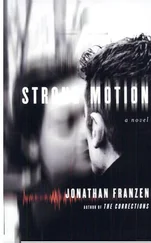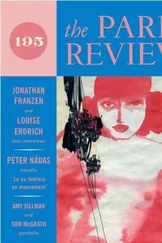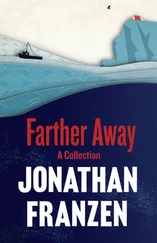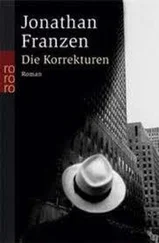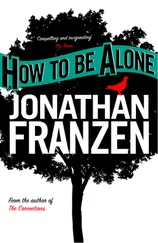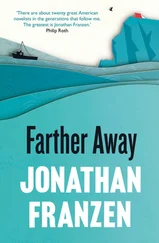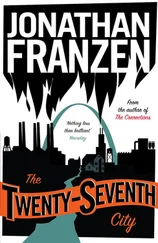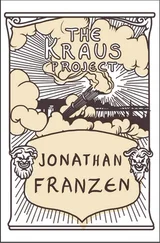Driving through the unincorporated town of Penrose, Lloyd and I pass a house with ostriches in the back yard, and he offers his opinion that ostrich farms are a Ponzi scheme. On a dusty street where the house numbers follow no evident logic, we succeed in locating the modest one-story home of Tom Schryver.
Schryver is a good-natured man, his face open and smooth. He has a big belly but a slender man’s handsome features. He meets us at his door in sandals and chocolate-colored polyester slacks. “I’m just an old hick,” he tells me happily. “I was selling pencils when I met Steve Stewart.”
Steve Stewart arrives moments later. He’s a realtor and he looks it. He has the extra pounds, the trustable face, the ease in weekend wear. He has driven down from Colorado Springs and brought along three commemorative clocks for the coaches of his son’s little league team. Tom Schryver has engraved brass nameplates for the clocks. “It’s a sideline of Tom’s,” says Stewart.
Tom Schryver had met Stewart when he peddled personalized pencils and other commercial souvenirs to Stewart’s agency. In late 1986, Schryver acquired a realtor’s license and immediately paid a visit to the Holy Cross Abbey. The abbey’s business manager confirmed that the monks were indeed prepared to sell. The manager and Schryver agreed on an asking price of 12.75 million dollars, and Schryver got exclusive rights to the property for seventy-five days. He began to petition the BOP’s head of property acquisitions, a man named Jim Jones.
What finally swayed Jones was the twelve-minute video Schryver made. In Schryver’s living room, drinking Storebrand diet cola, the four of us watch the video. Schryver can’t hide his pride in the zooms and pans and soundtrack. “It’s not as easy as it looks to match up what you’re saying with the pictures,” he says. “When I wasn’t talking, I turned up the volume of my stereo, and then I’d turn it back down when I had to talk.”
The music sounds like Mantovani.
“It’s a Reader’s Digest record,” Schryver says.
The video purports to be an overview of the abbey’s buildings for any potential buyer. Schryver subtly geared it, however, to the Justice Department. “I make a joke about prisons,” he says. “See if you can catch it. It’s just a joke between me and my mind.”
“Between you and your mind,” Steve Stewart echoes in comic awe.
There are, in fact, several jokes. On the soundtrack, Schryver describes the abbey’s gymnasium as “a very pleasant place to spend time.” (He appeals to us gleefully: “Get it? Spend time? ”) He goes on to mention that the abbey’s buildings are set back from Highway 50, thus providing “a buffer zone to the outside” (“Buffer zone! Hee-hee!”) and he notes that the abbey’s single entrance “can easily be outfitted with a gate to restrict access.”
“This whole town has a lot in common with Dachau,” Stewart remarks slyly.
“The last pan was especially hard because I had to do it from a car,” Schryver says. “It came out beautifully. You see how there’s a truck coming out just perfectly when I get to the entrance? This is a lot harder than you might think.”
“‘And now let’s take a look at the crematorium,’” Stewart voice-overs.
In February 1987, Jim Jones flew to Florence and pronounced the abbey the best site he’d seen yet. More than a thousand Cañonites sent copies of a form letter urging the BOP to buy it. According to Stewart, Jones was overwhelmed by the response. He announced publicly that the Bureau was acquiring a property in Colorado.
“I was already counting the three hundred seventy-five thousand that was my share of the commission,” Schryver says. “I was getting Mercedes-Benz literature.”
“It was a done deal,” Stewart says. “And then a week after the final appraisal I get up on a Saturday morning and there’s a banner headline in the paper: DEAL OFF FOR ABBEY. That’s how the exclusive agents for the property got their notice that the deal was off.”
The monks at the abbey had held a final vote on the sale and changed their minds.
“I’d worked hard on that sucker,” Schryver says. “I could have gotten all huffy and puffy when the deal fell through. But I let Steve do that.”
Steve Stewart believed that since his agency had exclusive rights to represent the abbey and had found a ready, able, and willing buyer, the abbey still owed him the realtor’s fee. He wrote to the Apostolic Delegate in Rome and placed a lien on the abbey. But no one in the Justice Department would confirm that the BOP intended to buy.
“Everybody’s looking for their twenty minutes of fame,” Jimmie Lloyd tells me on the way back to Florence. “Like most people, Tom Schryver didn’t get his.”
MY SECOND ATTEMPT TO PENETRATE FCC Florence takes place at the medium-security Federal Correctional Institution. Like ADX, the FCI is a showcase. Among its notably humane features are a sweat lodge where Native Americans can practice their rites, six full-size pool tables, a painting studio, and a library whose holdings include Gravity’s Rainbow in hardcover and Walter Kaufmann’s study of Hegel. Footpaths crisscross a large central campus whose lush grass is push-mown by prisoners in khaki. Nearly half the inmates at the FCI are in for drug offenses.
My guide, Case Management Coordinator Denise Snider, gives me an exhaustive tour of the UNICOR furniture factory. UNICOR is a semiautonomous federal corporation, like the Postal Service. It runs the BOP’s factories, selling exclusively to federal buyers. The products of FCI Florence are comfortable, personalityless chairs and sofas. Inmates working here earn between forty cents and a dollar and a quarter an hour. I see towers of foam rubber, air-powered drills and staplers attached to pendant yellow coils of tubing, an intriguing Gluing Room, and a whole lot of men in khaki.
UNICOR will train you for jobs on the floor — one of the program’s stated purposes is to provide inmates with “marketable skills”—but to land a desk job in UNICOR’s lovely late-model business office, you need prior experience in the outside world. At each desk, where the modern eye expects to see a braceleted young woman with padded shoulders and teased bangs, a bearded long-haired man in khaki is typing briskly. The effect is parodic or surreal.
For most of my visit to the FCI, Case Management Coordinator Snider remains profoundly unmoved by my efforts to charm and ingratiate. Her clothing and haircut are assertively sensible, and she’s plainly counting the minutes till she’s free of me. As I’m leaving, however, a few tiny chinks open in her professionalism.
“I was a psychology major in college,” she says, explaining how she acquired two degrees in criminal justice. “A professor told me she thought I’d be perfect for criminology. It suits my nature. I like to find things out about people without their knowing that I’m doing it.”
I ask her how many prison employees live in Florence or other nearby towns. I recall that Mr. Winn does not live in the area.
“We’re encouraged to live close by,” Snider says. “But the closest place I could find day care was in Pueblo. The administrators who are black might like to live close by, but they don’t feel welcome in Florence or Cañon City, so they end up in Pueblo or Colorado Springs, with an hour commute. Our warden is black, for example. He can’t live around here.”
IN JUNE OF 1987, after the abbey deal fell through, the Fremont County Economic Development Commission (FCEDC) learned from Jim Jones that the BOP had decided to build a new prison complex in the Western United States entirely from scratch. The FCEDC hastened to develop four potential sites in Fremont County, and Jones was particularly enthusiastic about a property owned by the Colorado Department of Corrections located between Cañon City and Florence. The FCEDC assured him he could have the land for free.
Читать дальше
Конец ознакомительного отрывка
Купить книгу
